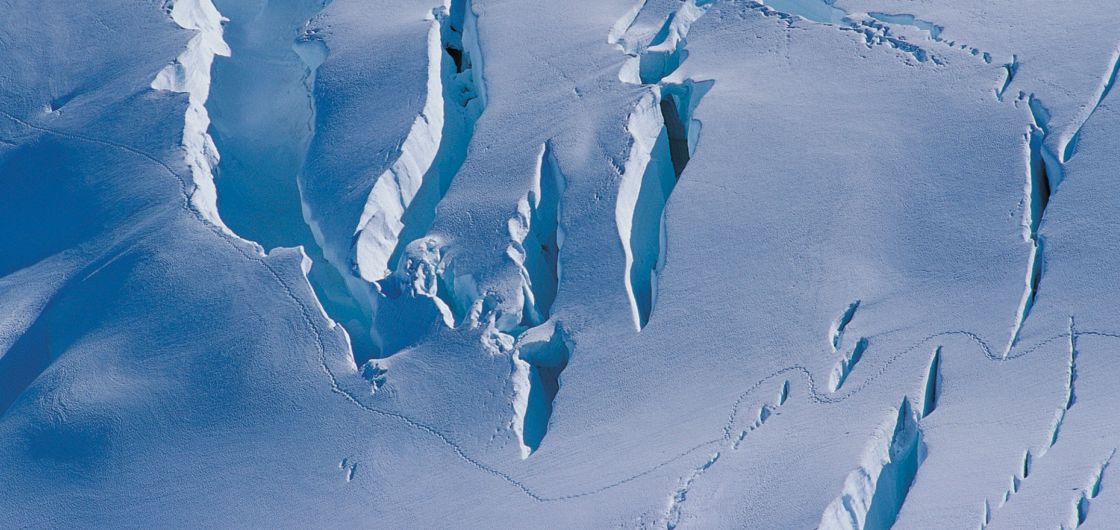
Throwback Thursday #8 - They Crouch Like Tigers
This article was originally written by author Paul Hersey for The Climber issue #62 (summer, 2008/2008).
English climber and writer David Craig once made the observation that mountains
‘ … act on us as the moon does on the seas, inert mineral masses exerting their force, leading us to their poles’.
Mountains dominate both the landscape and our mindscapes, creating a presence so real, so necessary, that everything else in our lives falls into a mish-mash of momentary unimportance. Climbers are drawn to these high wilds because of what lies inside themselves, as much as what lies in front of, and above, them. As Kiwi poet John Newton noted, mountains ‘… are a story you tell about yourself, a story you are journeying into, which swallows you.’
I climb because of, and sometimes in spite of, the way it makes me feel. Favoured alpine tapestries keep me returning in search of something that must otherwise be missing in my life. Why else deal with physical toil and drudgery hauling a heavy load, the discomfort and sometimes the lack of basic necessities? Climbers understand better than most how little we actually need to survive. The fear of falling and of falling rocks and ice, if not at the forefront of the mind, is a shadowy omnipresence through the moments and hours of steep travel.
It’s because of these moments that we climb; moments when, as another Kiwi poet Brian Turner described ‘… you may come across a place when everything seems as close to perfection as you will ever need. And striving to be faultless the air on its knees holds the [world] apart.’
We crave the opportunity to leave the worries and responsibilities of work, home and relationships at the road end. We seek the simplicity of a single, challenging goal.
Mountains define climbers, instilling a sense of place and being. Most New Zealanders can probably relate to mountains, along with the sea, in this way. Both are physical boundaries and environs to escape to. Swimming, sailing, surfing, tramping, mountain biking and climbing are all weekend pursuits that let us reconfirm our relationship with this country’s unique and irreplaceable landscape and seascape. Yet, the sea and the mountains can be unforgiving mediums. Summer media reports are peppered with search and rescue efforts and, occasionally, fatal accidents. And it is here that climbing gains its reputation as a dangerous, even perhaps reckless, activity.
Climbers and non-climbers alike usually have well-defined views on this. In discussions over the justification of the climbing ‘adrenalin-junkie-death-wish’ label, either end of the opinion spectrum is well occupied. Fence sitters tend to be rare. Accidents are seized upon by the media and clichés regurgitated, reconfirming for non-climbers what they thought all along. Conversely, climbers stick their heads in the sand and deny, deny, deny.
Often the news media does not deal with climbing accidents in a balanced way: so called ‘expert’ opinions can be anything but, compounding further the negative outlook that surrounds mountaineering.
But then climbers themselves need to face reality. Many alpinists I have talked to and climbed with over the years choose to gloss over the inevitable near misses as trifle. In most cases, I would consider this attitude as a coping mechanism for climbers to justify to themselves that the risks are worth it, rather than a gung ho attitude. Either way, accident statistics make for sobering reading, and surely it is better to learn from our mistakes than to ignore them.
In his poem Opening The Book, John Newton described hitching a ride to the mountains, then leaving the road and honouring ‘the logic of ridges and gorges, of funnels, of slotted stone chimneys’.
I found his last passage particularly prophetic: ‘… you tunnel to the spine of the island and bury yourself alive, with your possessions, this curved sky, this whisper of ice-cloud, this magic mountain slamming shut behind you.’
Mountains are stunning, dominant landscapes, as well as metaphoric reservoirs for refilling the glasses of our half empty lives. We journey to them. We immerse ourselves within their rules and boundaries. Sometimes, mistakes happen, or we’re unlucky enough to be in the wrong place at the wrong time.
Despite the human qualities we espouse on them, mountains don’t kill anyone. Their seemingly poised yet motionless state, their dark countenance when clouded over, their frowning ridges and threatening, sunless gullies are attributes born from our own fears and imagination.
People die in the mountains. This is a cold, hard fact—not sensationalised, but simply stated. People also die at sea, on our roads, in aeroplanes, from cancer, by their own hand, and sleeping quietly in bed.
It’s the nature of the activity that classifies it, and separates it from the likes of say yachting and flying. Climbing is, to some extent, seen as anarchistic and base. Whereas tramping allows us to experience the trappings of nature, mountaineering literally takes us to the edge of that experience and forces us to cling to life. This is the point that non climbers don’t understand. Why choose to put ourselves there in the first place?
